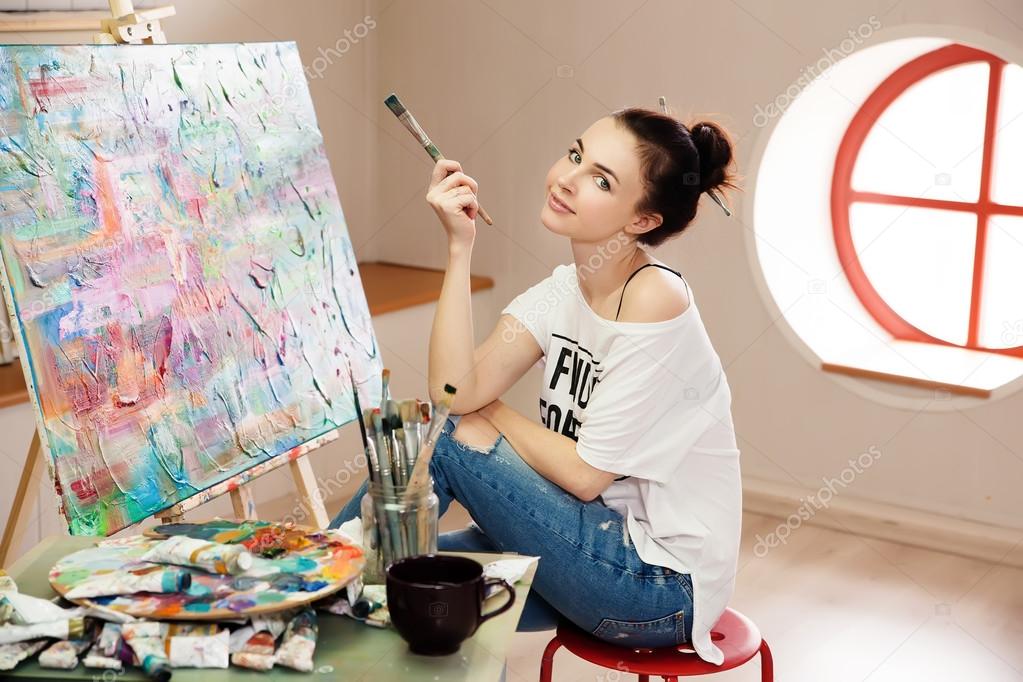Mixing Media in Photo-Based Painting: A Creative Journey
Imagine a world where the boundaries between photography and painting blur, creating an entirely new form of artistic expression. Welcome to the captivating world of mixing media in photo-based painting. It's a realm where professional photographers can expand their artistry by infusing traditional painting techniques with digital photo elements. In this article, we'll delve into the techniques, benefits, and inspirations behind this exciting fusion to help you unlock your creative potential.

Understanding the Concept of Mixing Media
Mixing different media in photo-based painting involves merging the precision of photography with the expressive qualities of paint. This approach allows photographers to add depth, texture, and emotion to their work, elevating it beyond the limitations of a single medium. By combining the detailed grid techniques with the fluidity of watercolor or the boldness of oil, artists can create visually stunning pieces that captivate viewers.
The Techniques: Bringing Your Vision to Life
Step 1: Selecting the Right Photograph
The foundation of every great photo-based painting starts with the photograph. Choose an image that resonates with you emotionally and has compositional strength. Consider editing the photo to highlight key elements or adjust contrast and color saturation before you begin painting. For more insights on photo editing, visit our guide on editing photos before painting.
Step 2: Planning Your Medium Integration
Whether you opt for oil, acrylic, or watercolor, understanding the characteristics of each medium is crucial. For instance, oil paints offer rich texture and depth, while watercolors lend a delicate, ethereal feel. Our article on acrylic vs oil for photo-based painting explores the pros and cons of each option.
Step 3: Layering and Texture Creation
Begin by sketching a basic outline onto your canvas, using the photograph as a reference. Then, experiment with layers and textures, allowing the painted elements to accentuate the photographic details. Techniques like glazing and impasto can add dimension to your work, inviting viewers to explore the interplay between the photograph and the paint.
Benefits of Mixing Media
The advantages of mixing media in photo-based painting are vast. This hybrid approach provides greater flexibility in your creative process, enabling you to explore concepts and colors in ways not possible with a single medium. It encourages a personalized artistic style, fostering innovation and originality. Furthermore, combining media often results in unique textures and visual effects that are simply unattainable through photography alone.
Inspiration and Influences
The world of mixing media in photo-based painting is as diverse as the artists who practice it. Some photographers draw inspiration from historical painting styles, merging classical techniques with contemporary themes. Others focus on abstract concepts, allowing the symbolism of mixed media to convey their messages. To discover more about how artists find inspiration, consider exploring painting from a picture as a source of creativity.
Exploring Photo-Based Art
For photographers eager to broaden their skills, participating in workshops or visiting exhibitions can be a source of inspiration and education. Engaging with works such as those displayed at the Unique Photo-Based Images exhibition can provide insight into how media can be masterfully blended to create thought-provoking pieces.
Concluding Thoughts
The art of mixing media in photo-based painting offers photographers a gateway to self-expression that surpasses traditional boundaries. By integrating various media, you can craft a personalized narrative that breathes new life into your photographic creations. So, embrace this innovative art form and embark on a journey to redefine what's possible in the realm of photographic artistry.

FAQ
1. What is the best painting medium for beginners?
Watercolors are often recommended for beginners due to their transparency and ease of use. They can be an excellent starting point for those exploring mixing media in photo-based painting.
2. Can digital elements be included in mixed media photo-based art?
Absolutely, digital tools can be integrated seamlessly with traditional painting elements, offering endless possibilities for creative expression.
3. Where can I learn more about photo-based painting techniques?
For further learning and inspiration, consider attending classes like the Intro to Painting from the Photograph course, which provides foundational skills and techniques.

